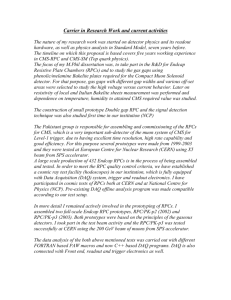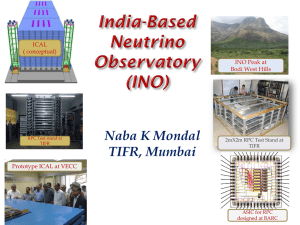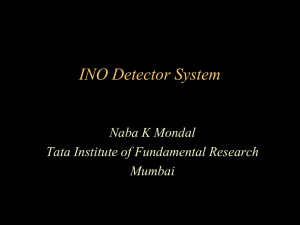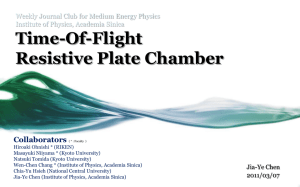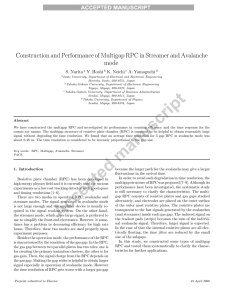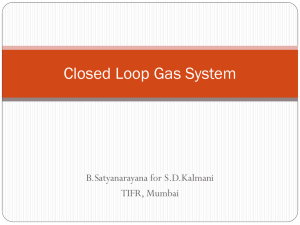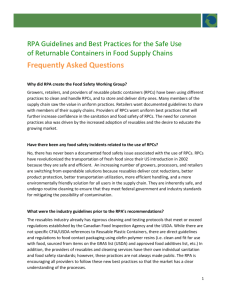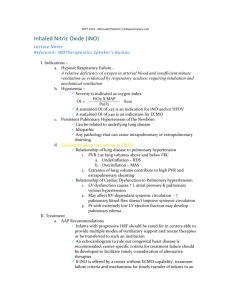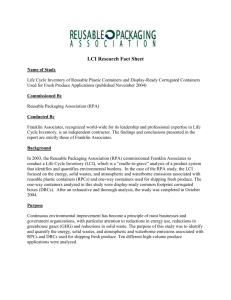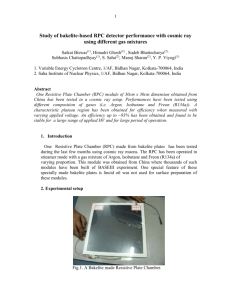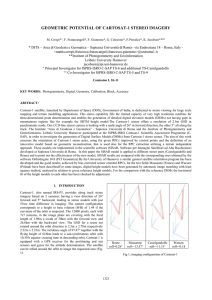Development of RPC for INO detector
advertisement
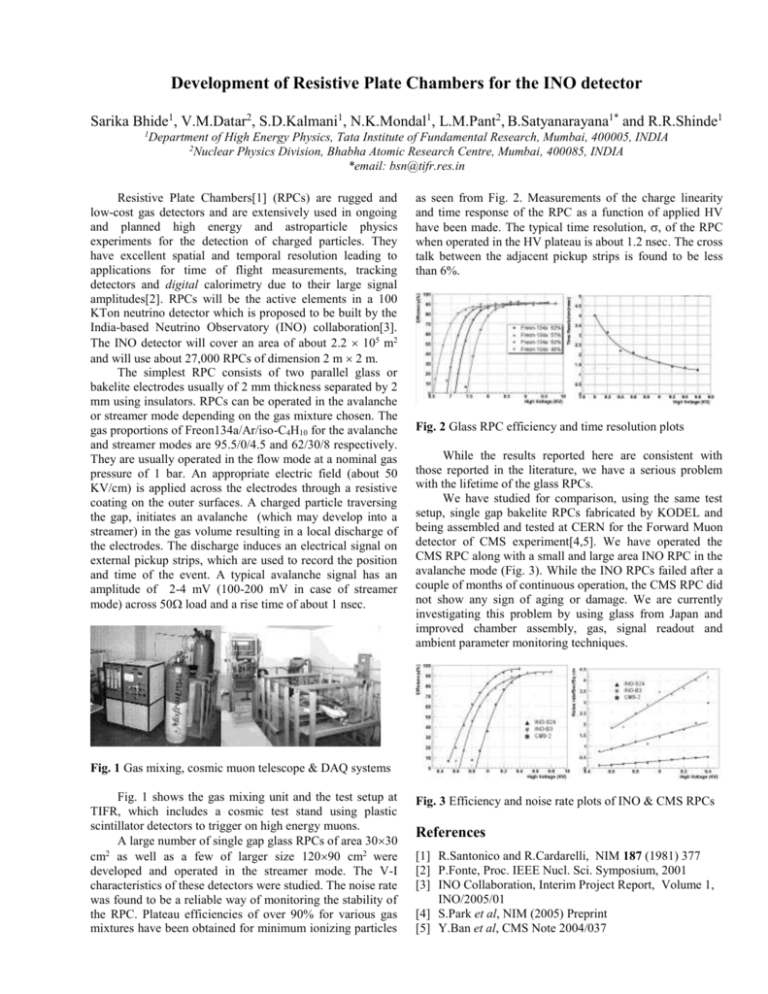
Development of Resistive Plate Chambers for the INO detector Sarika Bhide1, V.M.Datar2, S.D.Kalmani1, N.K.Mondal1, L.M.Pant2, B.Satyanarayana1* and R.R.Shinde1 1 Department of High Energy Physics, Tata Institute of Fundamental Research, Mumbai, 400005, INDIA 2 Nuclear Physics Division, Bhabha Atomic Research Centre, Mumbai, 400085, INDIA *email: bsn@tifr.res.in Resistive Plate Chambers[1] (RPCs) are rugged and low-cost gas detectors and are extensively used in ongoing and planned high energy and astroparticle physics experiments for the detection of charged particles. They have excellent spatial and temporal resolution leading to applications for time of flight measurements, tracking detectors and digital calorimetry due to their large signal amplitudes[2]. RPCs will be the active elements in a 100 KTon neutrino detector which is proposed to be built by the India-based Neutrino Observatory (INO) collaboration[3]. The INO detector will cover an area of about 2.2 105 m2 and will use about 27,000 RPCs of dimension 2 m 2 m. The simplest RPC consists of two parallel glass or bakelite electrodes usually of 2 mm thickness separated by 2 mm using insulators. RPCs can be operated in the avalanche or streamer mode depending on the gas mixture chosen. The gas proportions of Freon134a/Ar/iso-C4H10 for the avalanche and streamer modes are 95.5/0/4.5 and 62/30/8 respectively. They are usually operated in the flow mode at a nominal gas pressure of 1 bar. An appropriate electric field (about 50 KV/cm) is applied across the electrodes through a resistive coating on the outer surfaces. A charged particle traversing the gap, initiates an avalanche (which may develop into a streamer) in the gas volume resulting in a local discharge of the electrodes. The discharge induces an electrical signal on external pickup strips, which are used to record the position and time of the event. A typical avalanche signal has an amplitude of 2-4 mV (100-200 mV in case of streamer mode) across 50 load and a rise time of about 1 nsec. as seen from Fig. 2. Measurements of the charge linearity and time response of the RPC as a function of applied HV have been made. The typical time resolution, , of the RPC when operated in the HV plateau is about 1.2 nsec. The cross talk between the adjacent pickup strips is found to be less than 6%. Fig. 2 Glass RPC efficiency and time resolution plots While the results reported here are consistent with those reported in the literature, we have a serious problem with the lifetime of the glass RPCs. We have studied for comparison, using the same test setup, single gap bakelite RPCs fabricated by KODEL and being assembled and tested at CERN for the Forward Muon detector of CMS experiment[4,5]. We have operated the CMS RPC along with a small and large area INO RPC in the avalanche mode (Fig. 3). While the INO RPCs failed after a couple of months of continuous operation, the CMS RPC did not show any sign of aging or damage. We are currently investigating this problem by using glass from Japan and improved chamber assembly, gas, signal readout and ambient parameter monitoring techniques. Fig. 1 Gas mixing, cosmic muon telescope & DAQ systems Fig. 1 shows the gas mixing unit and the test setup at TIFR, which includes a cosmic test stand using plastic scintillator detectors to trigger on high energy muons. A large number of single gap glass RPCs of area 3030 cm2 as well as a few of larger size 12090 cm2 were developed and operated in the streamer mode. The V-I characteristics of these detectors were studied. The noise rate was found to be a reliable way of monitoring the stability of the RPC. Plateau efficiencies of over 90% for various gas mixtures have been obtained for minimum ionizing particles Fig. 3 Efficiency and noise rate plots of INO & CMS RPCs References [1] R.Santonico and R.Cardarelli, NIM 187 (1981) 377 [2] P.Fonte, Proc. IEEE Nucl. Sci. Symposium, 2001 [3] INO Collaboration, Interim Project Report, Volume 1, INO/2005/01 [4] S.Park et al, NIM (2005) Preprint [5] Y.Ban et al, CMS Note 2004/037
